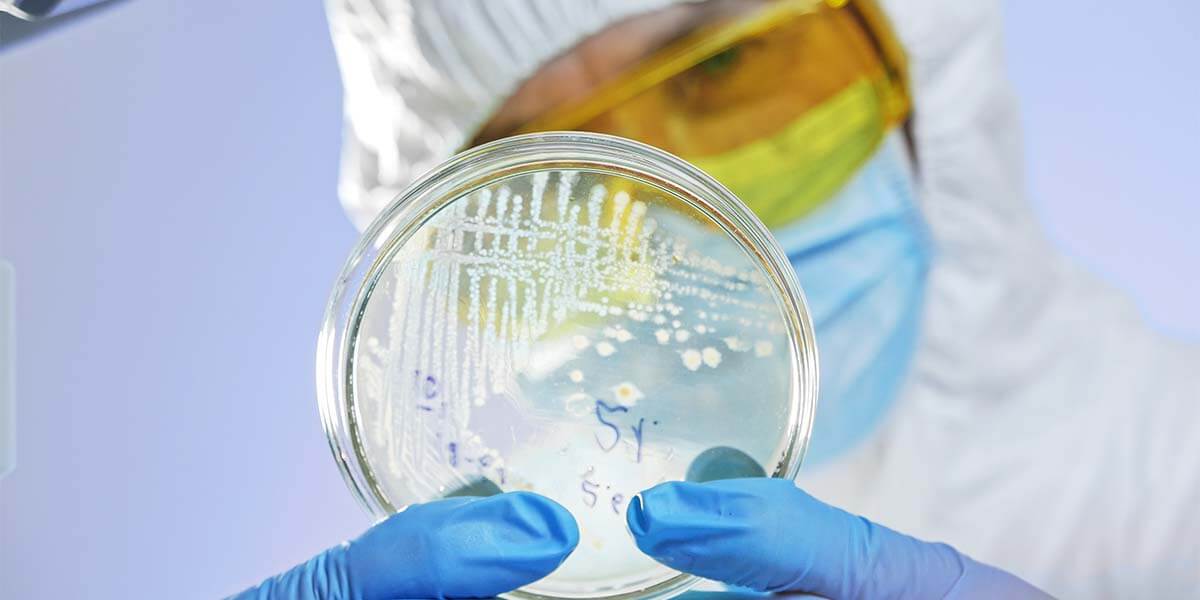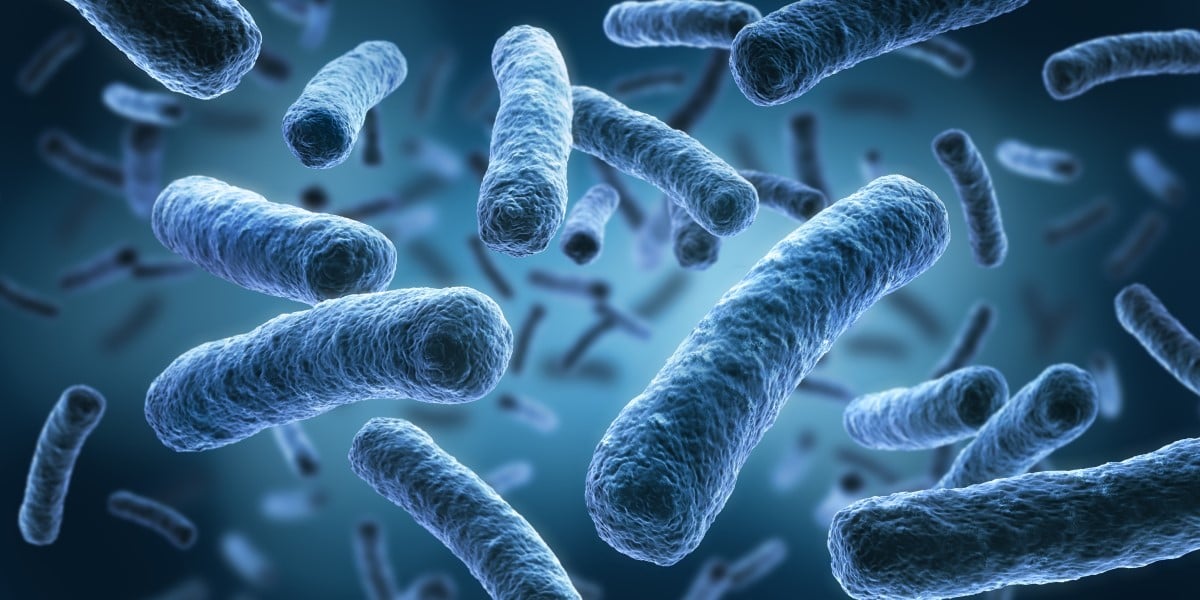When and how to test for Legionella bacteria in water systems
While Legionnaires' disease is a relatively rare disease, outbreaks and sporadic cases continue to occur worldwide. Outbreaks can occur in various settings, including workplaces, healthcare facilities, and hotels.
The latest figures reveal there were 254 confirmed cases of Legionnaires' disease in the U.K., including an outbreak in West Bromwich, which led to one patient being admitted to intensive care.
While the disease is potentially fatal, the good news is that harmful bacteria causing it can be removed by correctly maintaining water systems. Also, employers and landlords have a legal duty to do so and protect the health of people in their buildings. It is a key part of any water hygiene regime.
When and where do you find Legionella bacteria?
Legionella bacteria are most commonly found in water that meets one, or all, of the following three conditions:
- When the water is maintained between 20–45°C
- When the water contains nutrients
- When the water is stagnant
Legionnaires’ disease is contracted when people breathe in tiny water droplets in the air that contain Legionella bacteria. It is a type of pneumonia that can prove fatal, especially for at-risk populations, including the elderly, people with compromised or weakened immune systems, smokers, and alcoholics.
Legionella bacteria can also cause Pontiac fever, a mild flu-like illness with symptoms icluding fever, headaches and muscle aches.
Legionella bacteria are most likely to be found in:
- Atomisers
- Hot water heaters (calorifiers)
- Cooling towers
- Wet air conditioning plants
- Whirlpool or hydrotherapy baths (e.g. hot tub)
- Showers
- Domestic hot and cold water systems
- Dead legs or low use areas
What are the first steps in preventing Legionella bacteria?
The first step is to appoint a competent person to assess the risk of Legionella bacteria growth in their building’s hot and cold water systems. Each business and building is different; therefore, the person responsible needs to understand how their unique systems work. The responsible person(s) will need to have completed Legionella training in order to be able to manage the system appropriately.
This person must carry out a Legionella Risk Assessment that considers the risks of Legionnaires’ disease on their site. If no one in-house is sufficiently qualified, the Legionella Control Association has a list of all specialist companies on their website that are trained to carry out assessments on their behalf.
How often should Legionella testing be carried out?
The Legionella Risk Assessment should highlight the risk in your building and therefore when and how often you should test. However, if there is doubt over its findings - or if any procedures employed are ineffective - Legionella testing should be considered to be carried out weekly until the system is back under control.
When the results are evident or the procedures show effective results, it is safe to reduce or remove testing.
Cooling towers are also at risk; therefore, HSG274 Part 1 demands they are tested regularly: every quarter unless there are problems or the risk assessment advises otherwise, in which case testing should be more frequent.
Seasonal variations and changes in water system usage patterns may also impact the risk of Legionella and determine when more testing may be needed.
For example, in the warmer months, cooling towers and air conditioning systems operate more frequently, creating conditions that favour Legionella growth. And if water systems experience extended periods of shutdown during winter or low-demand periods, stagnant water can also encourage more Legionella bacteria growth. Regular monitoring and timely testing will help you identify and assess potential risks.
How to test for Legionella bacteria
When inspecting water systems, there are several visual warning signs indicating a higher risk of the presence of Legionella bacteria, including:
- Corrosion - Corroded pipes, fittings or valves provide a breeding ground for biofilm formation, which can harbour and protect Legionella bacteria from disinfection methods. Rust-coloured water or the presence of flakes and rust particles are indications of corrosion.
- Scale - The accumulation of scale provides a favourable habitat for bacteria, including Legionella, to colonise and proliferate. Visual signs of scale include white or off-white deposits on faucets, showerheads or internal plumbing.
- Sediment - The presence of sediment such as dirt, debris or particulate matter can be a potential source of nutrients and support the growth of Legionella bacteria. Brown or cloudy water, or visible particles in the water, can indicate the presence of sediment
There are also several ways of testing for Legionella bacteria. The technology is rapidly changing, and each method has its own positives and negatives. The merits of each one should be explained in depth by a water treatment professional who can offer advice based on the requirements of your building and the type of water system in it.
1. The culture method
Traditionally, water samples are collected from water systems using the bottle bulk water sampling method. This allows water to be collected from potable water fixtures or from warm-water-containing mechanical equipment.
The water sample is then sent to a UKAS accredited laboratory, such as WCS Group, which will identify the presence or absence of Legionella in the water sample collected, the bacterial count and Legionella species present. It is essential to collect the water samples at the right points within the water system and with the right methodology for accurate results. It is also important that samples are transported in the correct way and in the correct timescales.
However, these traditional lab-based culture methods are time-consuming, and it can take up to two weeks before the building owner or manager is aware of the result.
2. The PCR method
The PCR (or polymerase chain reaction) method is a technique that only takes a few hours to complete. The method consists of several steps:
- Viable cells are concentrated through membrane filtration.
- They are then subjected to sonication and heating procedures, which lyse the cells and free the DNA.
- Finally, the DNA is purified for the Polymerase Chain Reaction.
PCR is a fast and accurate way of detecting Legionella bacteria, often succeeding in detecting Legionella types when traditional methods fail; however, this method is traditionally more expensive, requires specialist equipment and results can be difficult to interpret. PCR’s are very useful in managing outbreak situations.
3. The rapid swab method
Rapid swab-testing kits that enable the detection of Legionella in just 25 minutes are now widely available. They are incredibly accurate at identifying the fatal Sero group 1 strain of Legionella.
Detecting Legionella so quickly allows rapid remedial action, which can significantly reduce the possibility of human infection. However, while being a helpful self-test tool in the toolkit, the rapid-swab method is not a substitute for a robust water testing programme and UKAS laboratory certification and can only currently detect Sero Group 1.
From where should you take Legionella samples?
Legionella samples should be taken from the locations identified in the risk assessment or from areas where there is a potential concern. It is often not suitable just to take one test as this will not provide the full picture as to the system’s health.
As well as the water that regularly flows through the system, special consideration should be given to high-risk areas:
- Where water temperatures drop-out of specification
- Where stagnant water may be sitting in pipes or tanks
Using temperature control to monitor and control Legionella
Another way to detect places that potentially contain Legionella bacteria is to test water temperature. While physically testing is necessary to ensure public safety, as always, prevention is the best cure. The best way to do this is to control water temperature, as the bacteria only grow to levels that can become dangerous between 20–45°C.
- Hot water storage cylinders (calorifiers) should store water at 60°C or higher
- Hot water should be distributed at 50°C or higher (thermostatic mixer valves must be fitted as close as possible to outlets, where a scald risk is identified)
- Cold water should be stored and distributed below 20°C
The temperature for water storage cylinders should be checked in accordance with the risk assessment, but this is likely to be every month, and cold water tank temperatures should be checked at least every six months. Also, ‘sentinel’ outlets, which are the closest and furthest from each tank or calorifier, should be checked for their monthly distribution temperatures.
Factors that influence Legionella testing
In certain environments, the risk of Legionella bacteria growth and transmission is higher. It is essential to consider the following factors when determining the need for Legionella testing:
- Healthcare facilities - Hospitals, care homes, and other healthcare settings with complex water systems pose an increased risk due to the presence of vulnerable populations, such as the elderly or immunocompromised individuals.
- Hospitality industry - Hotels, resorts, and other accommodations with large water systems and amenities like hot tubs and decorative fountains can create ideal conditions for Legionella growth and potential exposure to guests.
- Cooling towers and HVAC systems - Industrial and commercial buildings with cooling towers or large air conditioning systems can harbour Legionella bacteria if not properly maintained and treated.
- Public facilities - Facilities open to the public, such as swimming pools, sports complexes, and recreational centres, may be at risk due to the presence of warm water systems and aerosol-generating activities.
Proactive testing and risk management are vital to safeguard public health and ensure the safety of individuals who may come into contact with potentially contaminated water sources.
Why rapid detection is important
Managing the risks of Legionella bacteria is key to protecting the people’s lives inside your buildings, and it is also a legal requirement.
Making sure that your building has a risk assessment and has regular Legionella control regimes in place will help to avoid outbreaks of Legionnaires’ disease.
This post was originally published in October 2021, and updated in June 2023 for accuracy.
Topics: Legionella Control

Written by Jon Greaves
Jon has progressively worked through operational roles, account management, technical management, and senior management roles over the last 16 years within one of the group companies before moving into the role of Water and Air Managing Director. Jon has experience across multiple sectors of water and air compliance, including district energy networks; data centres; healthcare; food and beverage and facilities management. Jon acted as a corresponding steering committee member on CIBSE CP1 – Heat Networks Code of Practice for the UK released in 2020.







